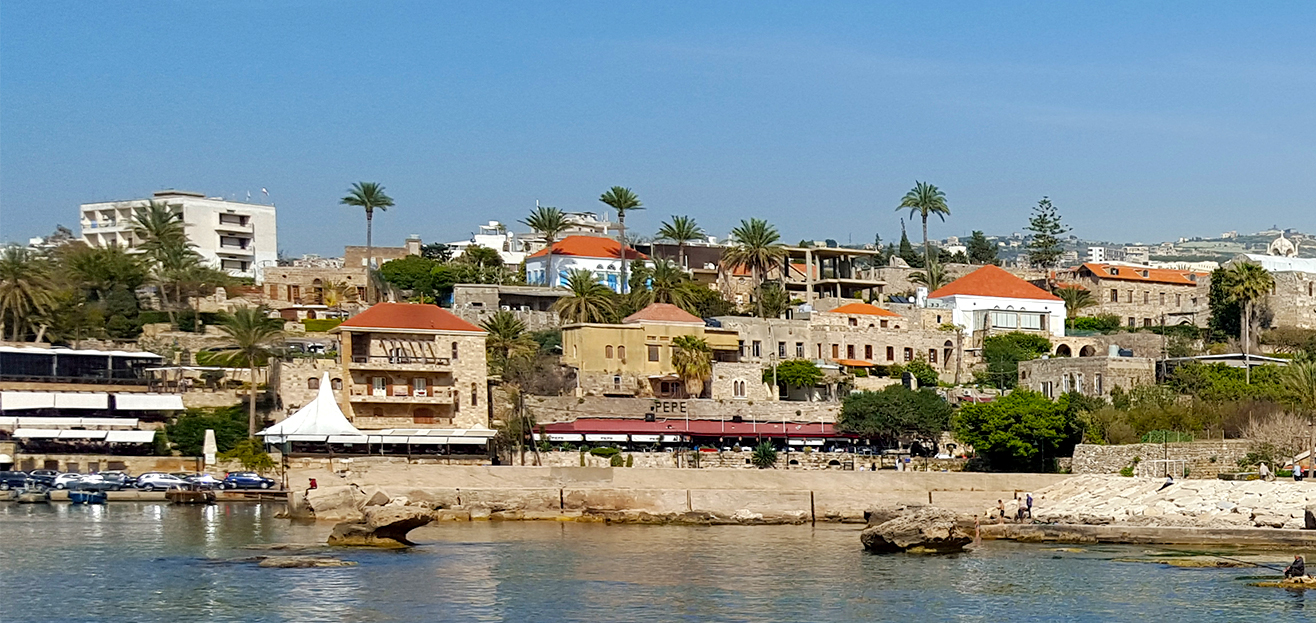About Byblos

Favored city of men and gods
Byblos is thought by some to be the most ancient city in the world, dating back more than seven thousand years. Presumably founded by Neolithic men, it became not only a port open to the high seas but also an urban community older than Paris, Rome or Athens.
We Lebanese take pride in the legacy of our forefathers, from our first prehistoric artifacts to our exchanges with many ancient communities and cultures, including the Egypt of the Pharaohs, mysterious peoples of the sea, and many others. For centuries, we welcomed men, myths and idols, supplying them with cedars to build their temples and pray to their gods.
The Ancient Egyptians had every reason to call our land the Coast of the Gods. Here we received Isis and Osiris, mourned together for Adonis, and gave the features of their goddess Hathor to our Lady of Jebal. We blended their beliefs with ours and exchanged our purple for their papyrus.
Men and gods have always bestowed mercy upon us. For we gave them a great gift, inventing the alphabet to help them know and love one another.
History
Byblos has always been a city in construction, its port coexisting with a great center of religious life.
In 332 B.C., Byblos was the first town in the Levant to rally to Alexander the Great during the conflict between Macedonia and ancient Egypt. The town came under the obedience of Rome in 63 B.C. with the arrival of Pompeii’s armies, drastically altering the city’s plan. In 330 A.D., as Constantine moved the capital of the Roman Empire to Constantinople, Byblos became part of the orbit of Byzantine culture. After the Roman Empire split between East and West, Byblos became the seat of a Christian bishopric, and the number of its inhabitants increased considerably.
The Muslim conquest in 636 A.D. marked the beginning of the Umayyad and Abbasid eras, which lasted until 1098 but left very few traces on the cityscape. The caliph Moawiya installed a Persian colony in the town and attached Byblos to the province of Damascus. The port was closed, and Muslim society began to adapt to Byzantine customs. Trade with Europe was considerably reduced and the town declined, making it vulnerable to Crusader invasions. A long period of torpor followed and lasted until the dawn of the Lebanese Republic.
In 1925, a team of archaeologists led by Maurice Dunand began excavating the ruins of ancient Byblos and uncovering their secrets. Excavations lasted until 1975 and produced many manuscripts and related publications.
In 1984, Byblos was declared a UNESCO world heritage site. Nowadays, the city is a key tourist hub bursting with life and activities. Each summer, the Byblos municipality organizes a major festival attracting thousands of visitors and top international performers.
Videos and Photos of Byblos
- View postcards.
- “Byblos, the Ancient City”: a documentary produced by Louis Cardahi Foundation on the history of Jbeil-Byblos City, Lebanon.
- “Byblos, La Cité Millenaire, Visite Guidée”: a video describing and explaining the history of Byblos to Highschool students, guided by Frère André.
- “Byblos Projecting Mapping Event, 2013”: A winning proposal for this non-profit project included identifying the best heritage site in Byblos for the video mapping event. Though it would be the most challenging site, the medieval citadel in the center of the old port was chosen for its floating situation offering for the projected visuals potential rich reflections over the surface of the water. Each historical period of the city was depicted in a creative way capturing visually the essence of that time. A flow of sequences was carefully designed to take the audience into a series of unexpected visual cliffhangers keeping their interest peaking throughout the whole 6 minutes show.
